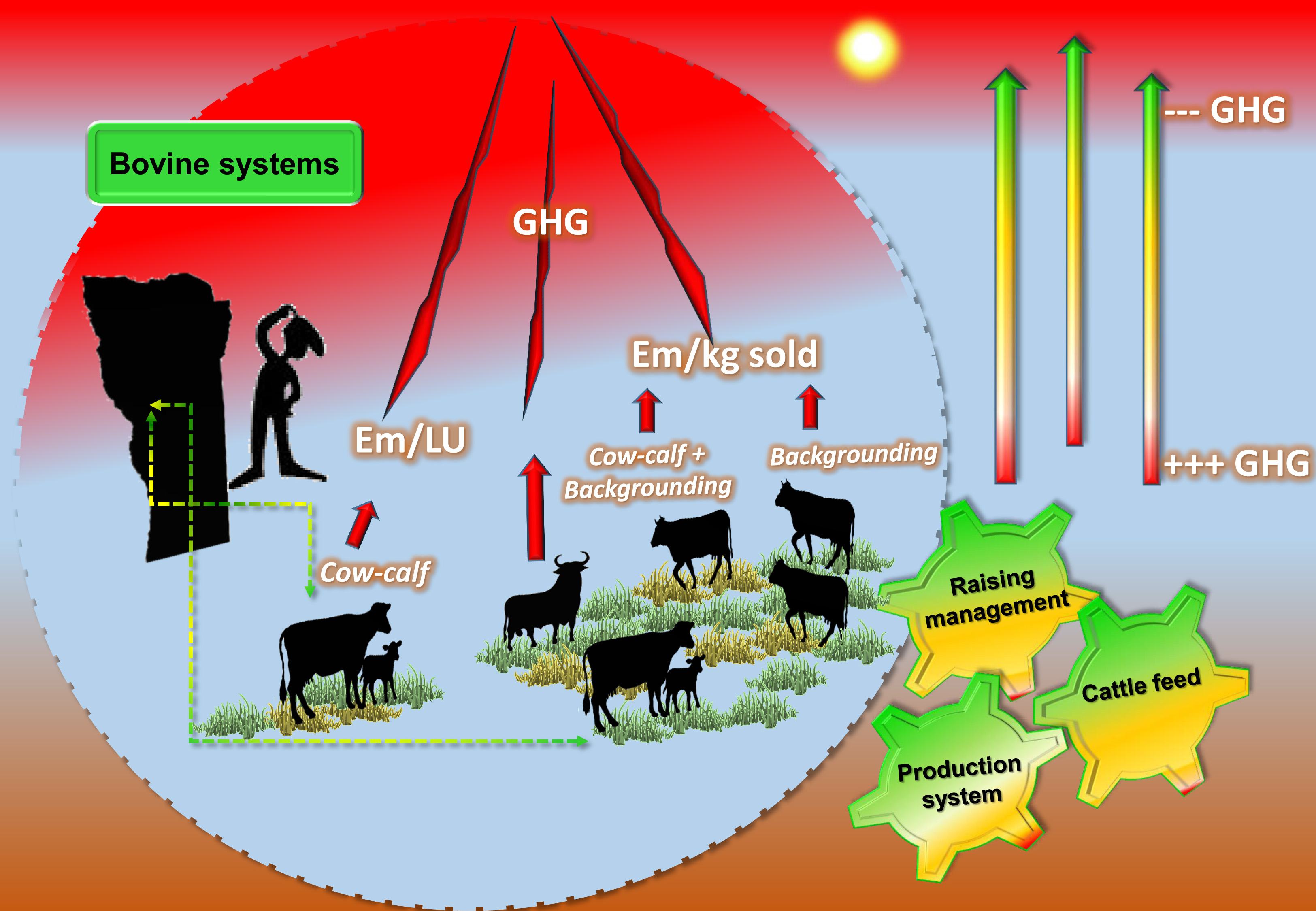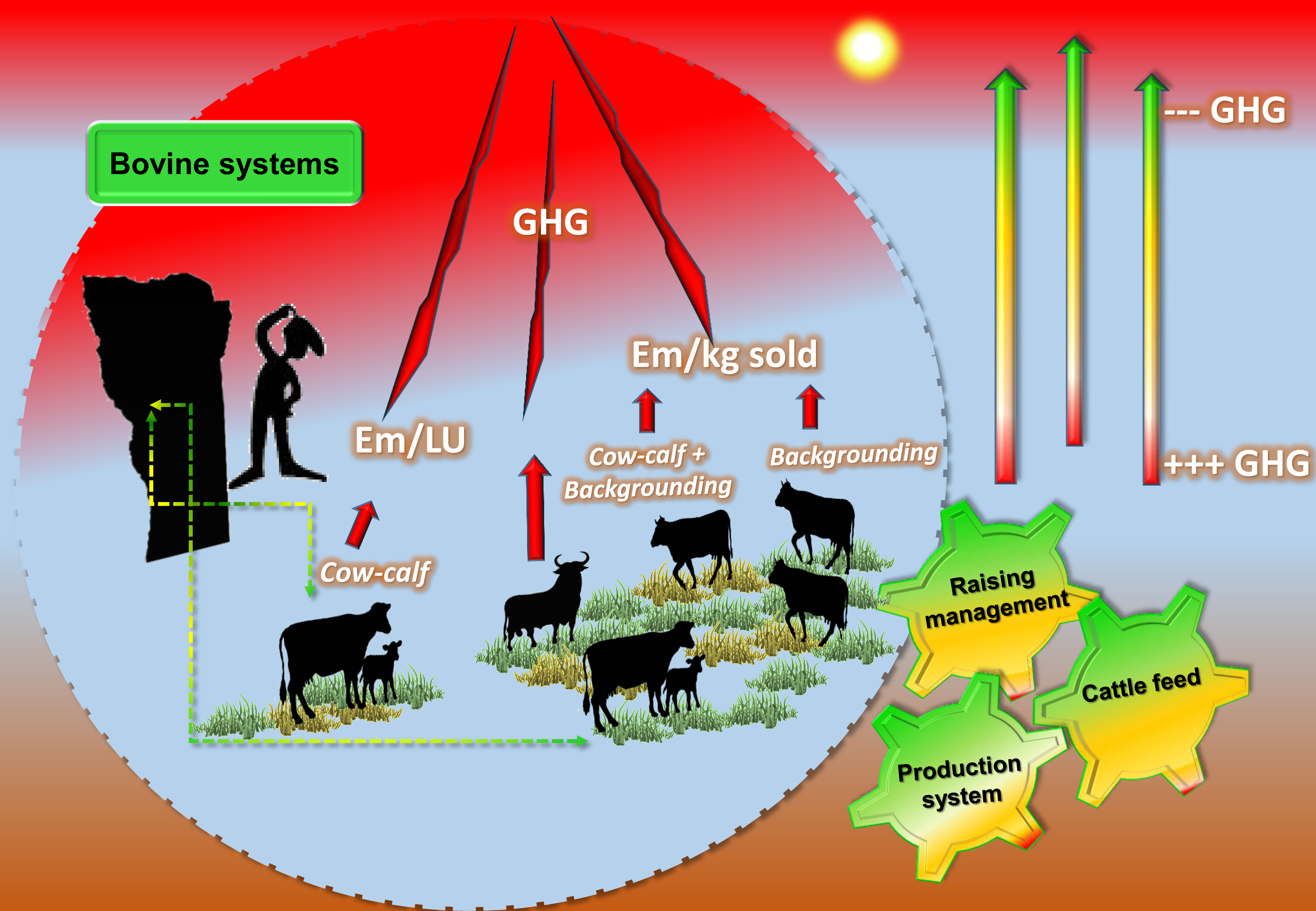The management of extensive livestock systems and its relationship with greenhouse gas emissions
Palabras clave:
metano, óxido nitroso, cría bovina, recría bovina, semiáridoResumen

During food fermentation, the digestive system of bovines generates methane gas as agricultural waste. Considering this, this study intended to evaluate different relationships between production type and management technologies, with enteric methane and nitrous oxide emissions, from beef cattle systems in the southern region of the San Luis province. To achieve this objective, 30 semi-structured surveys were conducted with regional producers. The producers were generally characterized, and the emissions were estimated through the application of the IPCC Level 2 protocols. Then, considering various techniques for technology management and adoption, these emissions were analyzed and compared. The production systems resulted to be heterogeneous in area, number of cattle, rodeo management, livestock unit, production, and other aspects. The estimated emission values were also variable depending on the form of expression, the management strategy adopted, and the production system applied. From a reductionist perspective of the aspects that characterize the extensive livestock systems evaluated, greenhouse gases emission values (GHG) are relative to the interaction of some predictive variables with the key factors of the production system and management techniques applied. Thus, when considering the emissions per kg sold, cow-calf+backgrounding or backgrounding systems, are environmentally more friendly than those of cow-calf, being the bull category the most sensitive to gas emissions. However, moderate or very good management in the cow-calf systems, tend to reduce them. Since the characteristics of the systems are so diverse, even for the same region, a broader and more integrated view is proposed for the expression of emissions, given by the set of variables that reflect the integral behavior of the system.
Highlights
- The GHG emission values are relative to the interaction of some variables related to the typical characteristics of the production systems and to some management techniques applied.
- Taking the different levels of raising management into account, significant differences were only found in Emissions/kg sold emissions, observing that those who apply moderate management or very good management, emitted fewer emissions than the ones which do not apply any raising management.
- When considering the kg sold emissions, Cow-calf+Backgrounding or Backgrounding systems turn to be environmentally friendlier than those of Cow-calf. In cow-calf and Cow-calf+Backgrounding systems, emitted less animal live weight emissions (Em/LW), given the variability in categories and high weight of most of the animals in these systems.
- When considering livestock unit load emissions (LU/ha), Cow-calf systems presented advantages in emissions with respect to those of Backgrounding and Cow-calf+Backgrounding, since they constitute systems with low receptivity for their forage structure.
Descargas

Descargas
Publicado
Cómo citar
Número
Sección
Licencia
Aquellos autores/as que tengan publicaciones con esta revista, aceptan las Políticas Editoriales.










.jpg)




